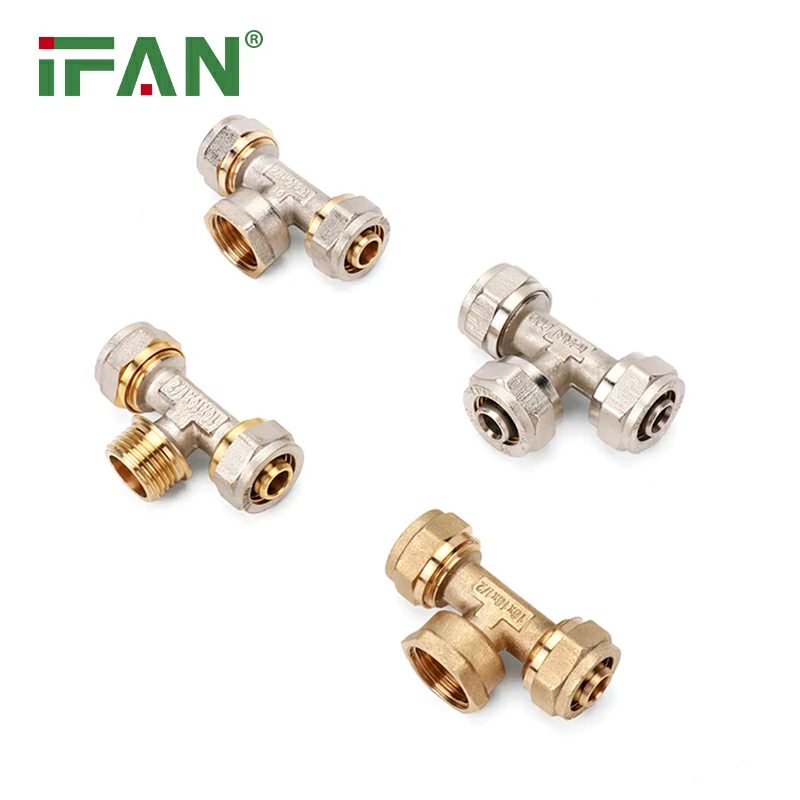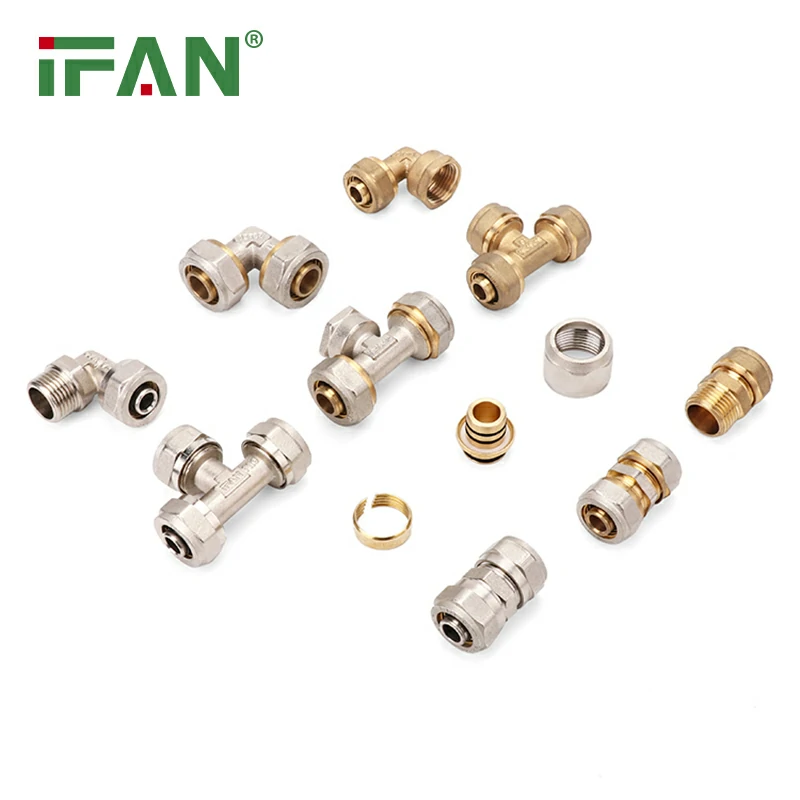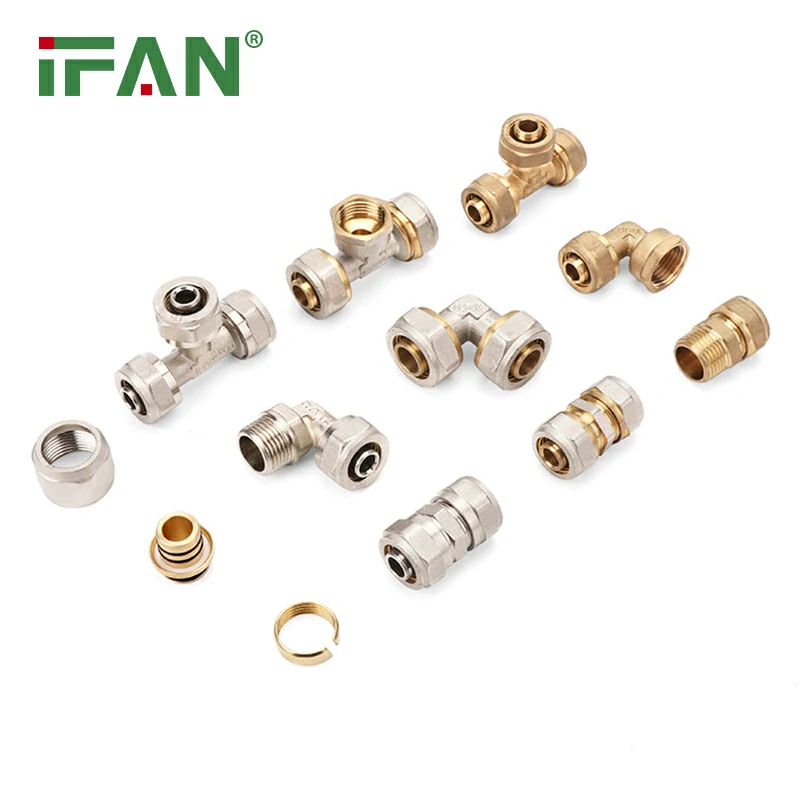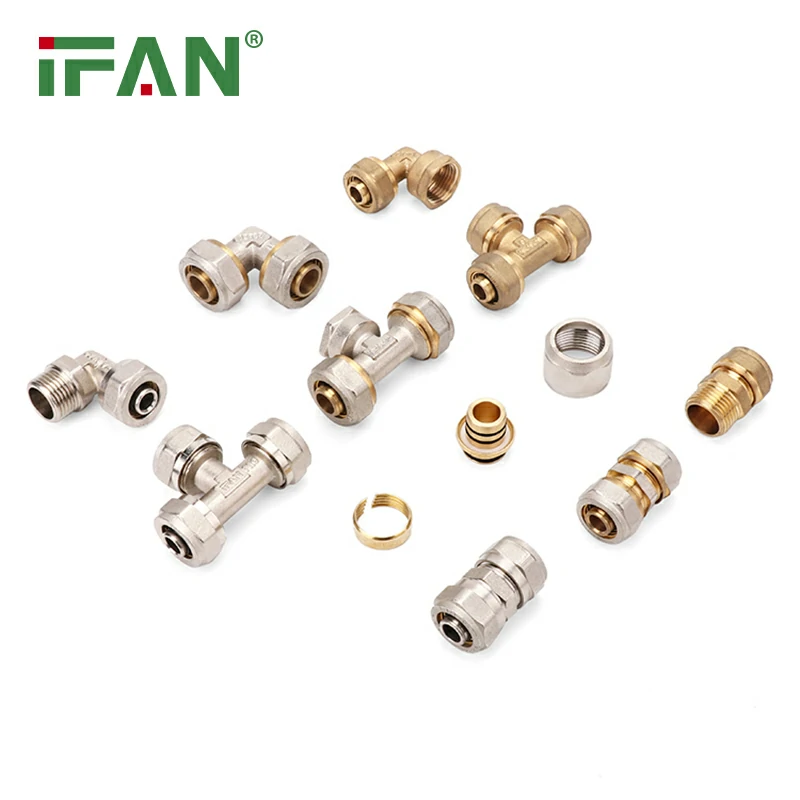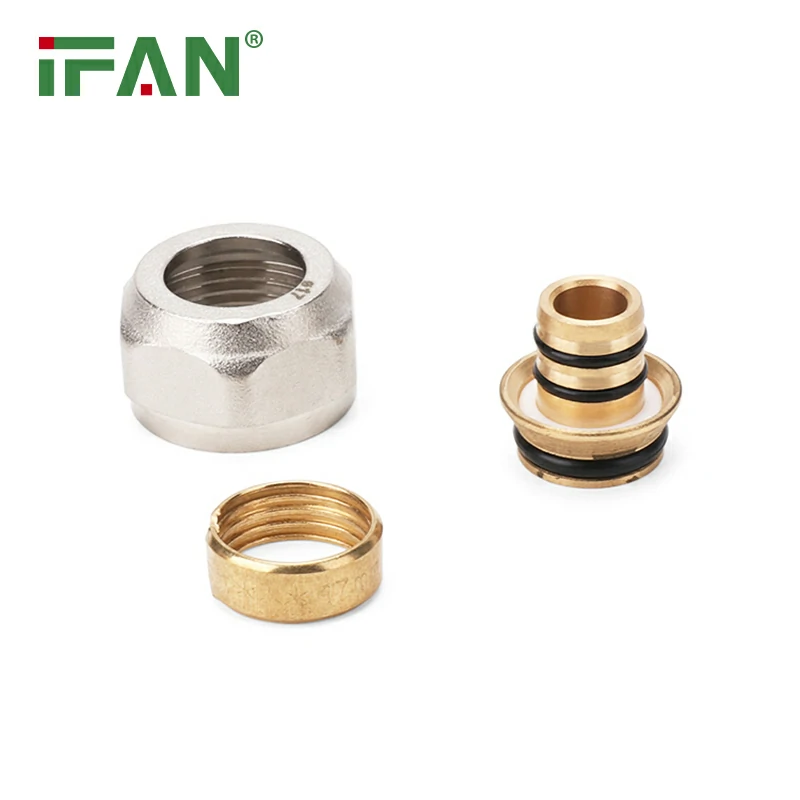IFAN factory 30+ years manufacture experience support color /size customization support free sample.Welcome to consult for catalog and free samples.This is our Facebook Website:www.facebook.com,Click to watch IFAN’s product video.Compared with Tomex products, our IFAN products from quality to price are your best choice, welcome to buy!
PEX (cross-linked polyethylene) pipe fittings have become increasingly popular for residential and commercial plumbing due to their flexibility, durability, and ease of installation. However, even with all the advantages, there can still be issues that arise during installation or in the years after the system is in place. This guide will help you troubleshoot common issues with PEX pipe fittings, identify the underlying causes, and provide effective solutions to ensure your system remains leak-free and operational.
Why Do PEX Pipe Fittings Fail?
PEX pipe fittings are generally reliable, but they can fail for a variety of reasons. Some of the most common causes include:
- Improper installation: If fittings are not installed properly, they can leak or fail prematurely.
- Poor-quality fittings: Not all PEX pipe fittings are created equal, and using low-quality parts can result in leaks and system failure.
- Environmental damage: Exposure to extreme temperatures, UV light, or chemicals can degrade PEX materials over time.
- Excessive pressure or stress: Over-tightening fittings or over-pressurizing the system can cause damage to both pipes and fittings.
Let’s dive into the most common issues with PEX pipe fittings and how to resolve them.
1. Leaking Fittings
One of the most frequent issues with PEX plumbing is leaking fittings. Leaks can occur in various places: around the crimp ring, clamp, or push-fit connector. Identifying the cause of the leak is essential to fixing it.
Causes of Leaking Fittings:
- Improperly crimped or clamped rings: If the crimp ring or clamp isn’t tightened properly, water can escape through the connection.
- Debris or dirt: Any dirt or debris on the fitting or pipe can prevent a proper seal.
- Damaged O-rings: In the case of push-fit fittings, a damaged or misaligned O-ring can cause leaks.
- Over-tightening or under-tightening: Both of these issues can cause leaks, especially with crimp or clamp-style fittings.
Solution:
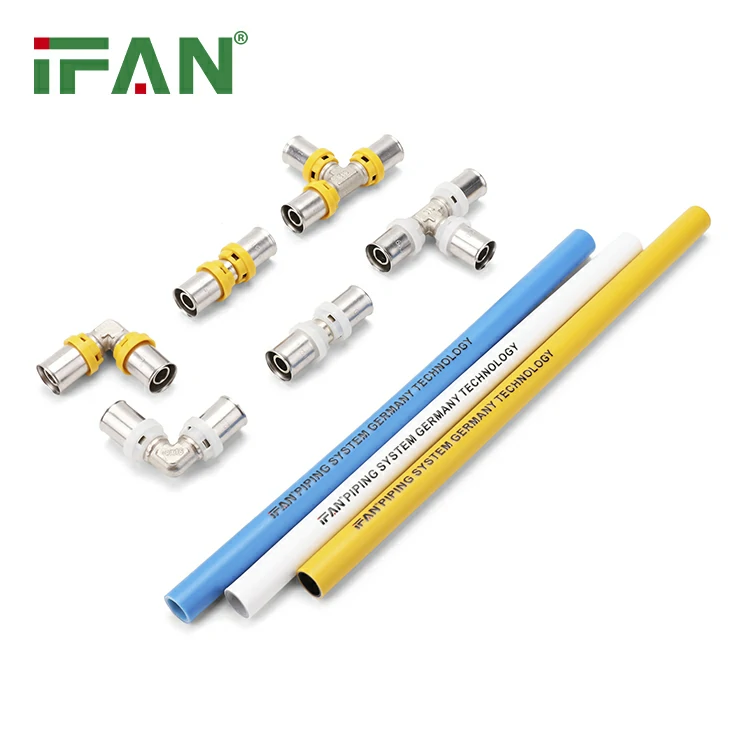
- Inspect the fitting: First, turn off the water supply and examine the fitting for any visible damage or signs of wear. If the fitting appears damaged or worn out, replace it.
- Re-crimp or re-clamp: If you suspect the crimp or clamp was not properly installed, use the correct tool to re-crimp or re-clamp the fitting.
- Clean the pipes and fittings: Before reinstalling the fitting, make sure the pipe and fitting are clean of any debris, dirt, or oil that could interfere with the seal.
- Replace O-rings: For push-fit fittings, check the O-ring for any cracks or damage. Replace the O-ring if necessary.
2. Leaking Around the Crimp Ring or Clamp
A leaking crimp ring or clamp can cause serious water damage if left untreated. The cause of the leak is usually an improperly installed ring, an incorrect tool, or damage to the PEX pipe.
Causes of Crimp Ring or Clamp Leaks:
- Poorly crimped ring: An uneven or incomplete crimp can leave gaps in the seal, allowing water to escape.
- Wrong-sized clamp: Using a clamp that is too large or too small for the PEX pipe can lead to leaks.
- Damaged pipe: If the pipe is cracked or damaged, the connection will fail even if the crimp or clamp is applied correctly.
Solution:
- Reinstall the fitting: Remove the faulty crimp or clamp and re-install it correctly using the proper tool. Make sure the crimp is complete and even. For crimp rings, use a crimping tool designed for PEX to ensure a tight seal.
- Use the right clamp size: Double-check the size of the clamp or crimp ring to ensure it’s the right fit for the PEX pipe you’re using.
- Inspect the pipe: If there’s any sign of damage to the pipe, replace it before reassembling the fitting.
3. Fitting Not Fully Inserted into Pipe
When installing PEX pipe fittings, the pipe must be fully inserted into the fitting for a secure seal. If the pipe is not inserted deep enough into the fitting, the connection will leak.
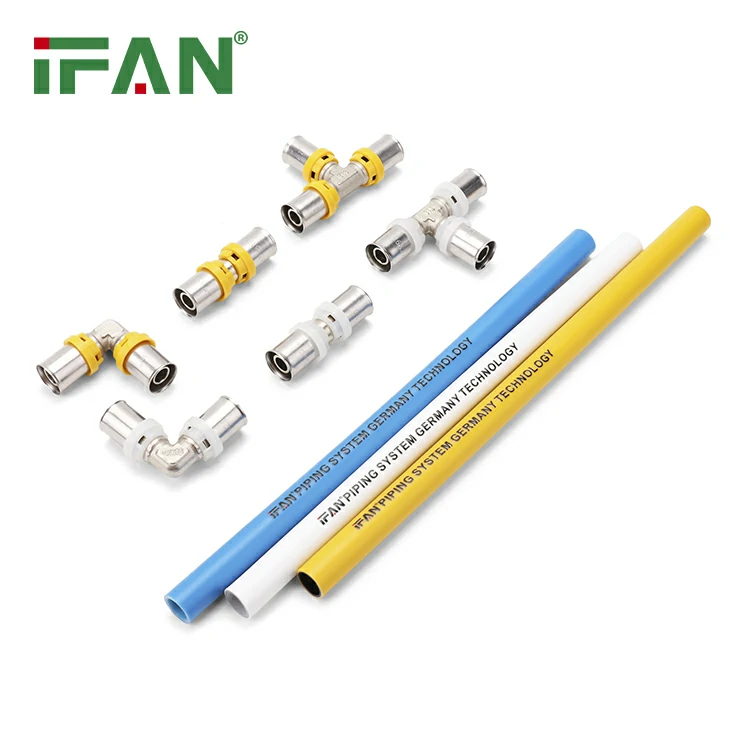
Causes of Incomplete Insertion:
- Improper technique: Rushing the installation or using too much force can prevent the pipe from being properly inserted.
- Damaged pipe end: A ragged or uneven cut at the pipe’s end can cause it not to fit properly into the fitting.
- Fitting size mismatch: If the fitting is too small for the pipe, it may not allow full insertion.
Solution:
- Check the pipe and fitting size: Ensure the PEX pipe and fitting are the same size. A mismatch in size can prevent a proper seal.
- Inspect the pipe cut: Make sure the pipe is cut evenly and cleanly. If the cut is jagged, trim the pipe again to ensure a smooth, even edge.
- Fully insert the pipe: Push the pipe all the way into the fitting until it reaches the fitting’s stop or bottom.
4. Damaged Push-Fit Fittings
Push-fit fittings are popular for their ease of installation, but they can also experience problems such as difficulty locking in place, or the O-ring can wear out, causing leaks.
Causes of Push-Fit Fitting Issues:
- Improper installation: Failing to push the pipe fully into the fitting or misalignment of the O-ring can prevent a proper seal.
- Degraded O-rings: The O-ring in a push-fit fitting can degrade over time, especially when exposed to high temperatures or harsh chemicals.
- Incorrect fitting size: A mismatch between the PEX pipe and the fitting can cause leaks and connection failure.
Solution:
- Proper installation: Ensure that the pipe is fully inserted into the push-fit fitting. You should feel resistance when the pipe reaches the stop inside the fitting.
- Inspect the O-ring: If the fitting is leaking, inspect the O-ring for wear or damage. Replace the O-ring if needed.
- Check for fitting compatibility: Verify that the pipe and fitting are the correct size and type. If there is a mismatch, replace the fitting with one that is compatible with your pipe.
5. Fittings Becoming Loose Over Time
Over time, PEX pipe fittings can become loose, especially in systems that experience fluctuating water pressure or constant movement. A loose fitting can lead to leaks or even cause the pipe to detach completely.
Causes of Loose Fittings:
- Inconsistent pressure: Fluctuations in water pressure can cause fittings to loosen over time.
- Pipe expansion and contraction: PEX pipes expand and contract with temperature changes, which can loosen fittings that are not secured properly.
- Incorrect installation: Not tightening the fittings enough during installation can lead to them becoming loose over time.
Solution:
- Tighten fittings: If a fitting becomes loose, turn off the water supply and tighten the fitting again. Be careful not to overtighten, as this can damage the PEX pipe.
- Ensure proper installation: When installing fittings, use the proper tools and techniques to ensure a secure connection. Crimp and clamp fittings should be tightened evenly to prevent loosening.
Conclusion
Properly installed PEX pipe fittings are a reliable solution for modern plumbing systems, but like any plumbing component, they can experience issues over time. By understanding the common problems—such as leaks, loose fittings, and improper installation—and following the troubleshooting tips outlined above, you can maintain a leak-free plumbing system.
Regular inspection and timely maintenance will help you avoid costly repairs and keep your system working efficiently for years.
FAQs
1. How can I tell if my PEX fitting is properly installed?
A properly installed fitting should be securely attached, with no visible gaps or movement. For crimp and clamp fittings, use the correct tool to ensure the ring is fully compressed.
2. Can I use PEX fittings with both hot and cold water systems?
Yes, PEX pipe and fittings are suitable for both hot and cold water systems, as long as they are rated for the correct temperature.
3. Why is my PEX fitting leaking after installation?
Leaks can result from improper installation, damaged O-rings, or loose fittings. Inspect the fitting, pipe, and O-ring, and re-install the connection if necessary.
4. Can I reuse PEX fittings?
It’s not recommended to reuse PEX fittings, especially crimp or clamp-style ones, as they may not form a secure seal after being disassembled.
5. How do I prevent leaks in my PEX plumbing system?
To prevent leaks, ensure proper installation, use high-quality fittings, and inspect the system regularly for signs of wear.

